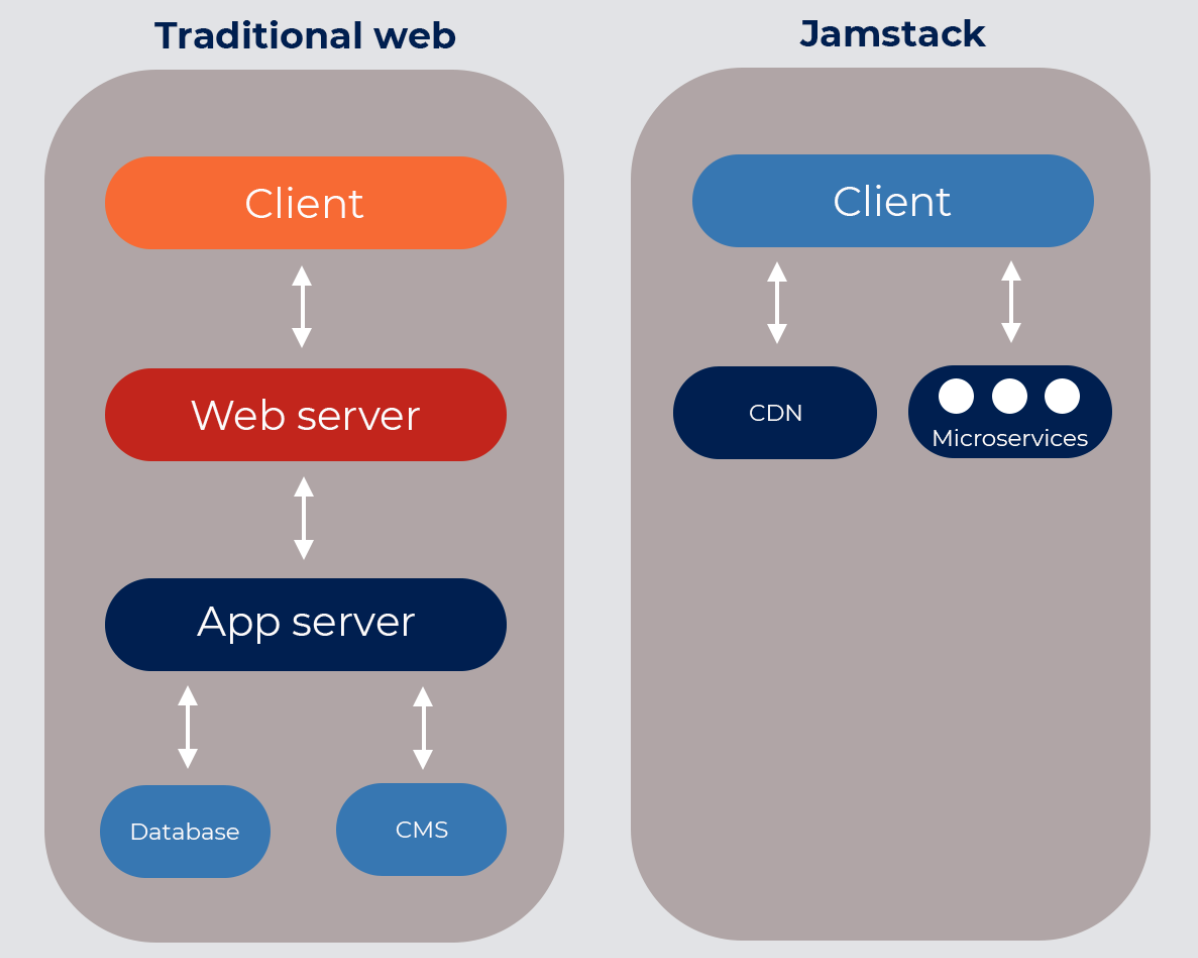Insights > What exactly is a JamStack Website, and why is it better?
PublishedWhat exactly is a JamStack Website, and why is it better?

Well, here it is in a nutshell: traditional websites that utilise a content management system (CMS) such as WordPress have many moving parts. Every web request goes through a complicated process that includes a web server, backend programming, a database, HTML compilation, caching, compression, security, and other processes. All of this takes time, is expensive when you grow, and makes technical failures and security exploitations much more likely.

JAMstack (JavaScript API and Markup), on the other hand, combines three technologies that allow for the generation of static web code in advance. (This is known as pre-rendering.) So, even before the website is requested, the complete front-end is prebuilt into static web pages and delivered to a Content Delivery Network (CDN), a global network of servers. Because of this pre-rendering process, websites are sent straight to the user from a CDN. This significantly reduces the cost, complexity, and security risks of traditional website architecture. It's also blisteringly quick, as it's served by the servers that are physically nearest to them.
Another difference is that you can use a setup known as "headless," where the front-end and back-end of the website are not integrated; they are decoupled, unlike traditional websites where the CMS is responsible for both the back-end management of content and serving that content to end users. There are a few benefits to this. Firstly, you can keep using your existing CMS, giving your team the comfort and familiarity of using the admin interface they like best while freeing up developers to create rich and unique front-end designs and functionality without affecting performance. Also, the front-end can be expanded, modified, or changed without affecting the back-end, so when you want a new website, you can save time and budget by completely changing the design while keeping the back-end as it is. It also means you have far more creative freedom because you won't have to worry about rich design, animation, and video slowing down your website. (A significant benefit in a commodity like the legal sector is that differentiation online is a challenge.)

JamStack websites also easily integrate with third-party services, allowing them to utilise different technologies efficiently. These are linked by APIs and eliminate the need for organisations to spend time and money reinventing the wheel whenever new functionality is required. Authentication and identification, payments, content management, data services, search, and other features can all be added, updated, and changed without having to rebuild the back end. Another way of future-proofing your website
So what does a JamStack website give you, on top of speed and performance, the ability to create a unique user experience, future proofing, security, and scalability? Well, a key goal of every website should be to get as high as possible in Google's rankings, which will bring in more organic traffic and more new clients. And for that to happen, the website needs to be SEO-friendly. As Jamstack sites are so quick, light, and easy for Google's crawlers to read, Google gives them higher rankings and makes them more visible online.
And once you are found, in this day and age, visitors to your website have more expectations than ever before. Firms need to find competitive advantages to stand out, but traditional website architecture has its limits. This is why Amazon, Nike, Tesla, Louis Vuitton, and Peloton are just some of the big international brands that have moved to JamStack.
The time for law firms to embrace JamStack is now, and if you're interested in exploring how it could benefit your firm, please just reach out. hello@indieridge.com
